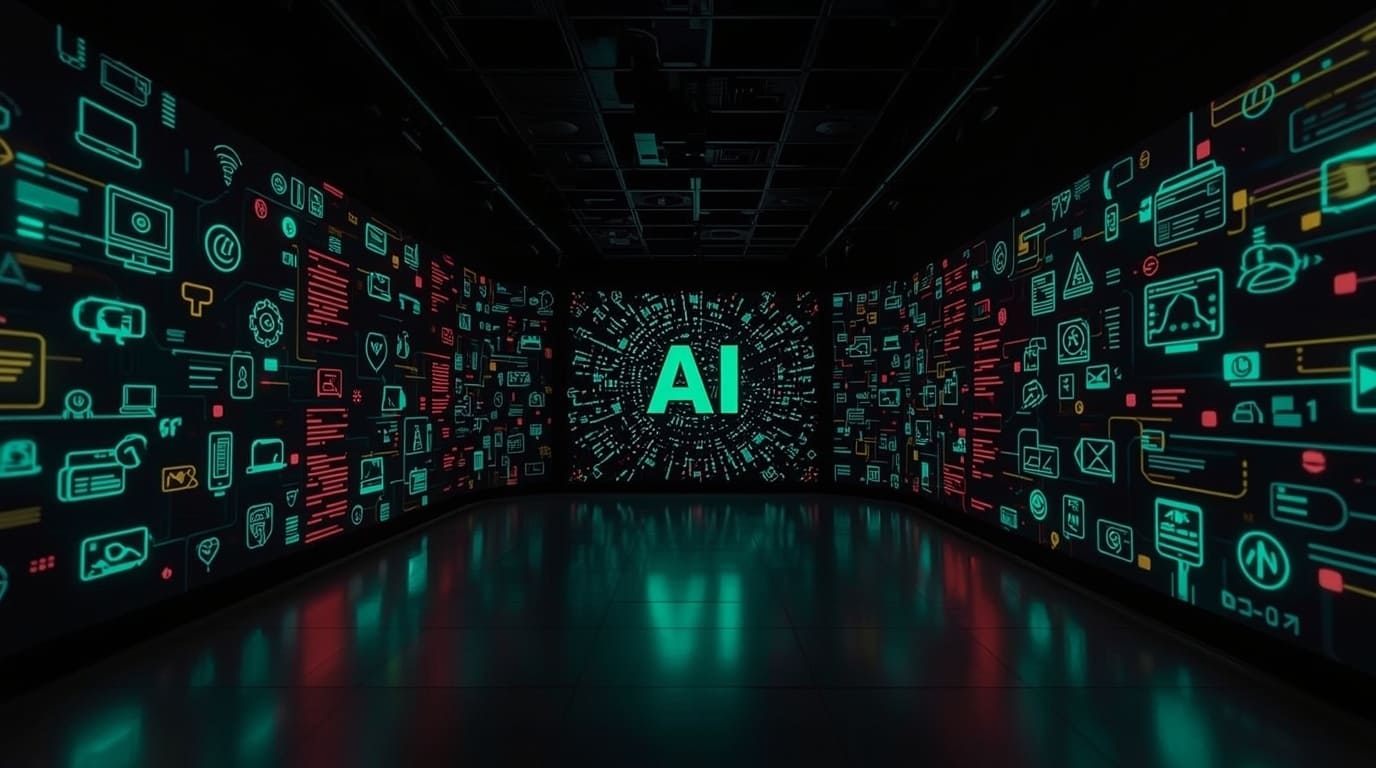Are you tired of long wait times and inconsistent support from traditional live chat? AI chatbots might just be the game-changer your business needs. With advances in NLP (Natural Language Processing) and intent detection, AI-powered chatbots provide seamless 24/7 support, boosting customer satisfaction and operational efficiency. In this post, we’ll break down exactly why AI chatbots are transforming customer service and how they stack up against traditional live chat solutions.
Understanding NLP: The Brain Behind AI Chatbots
Natural Language Processing (NLP) is the foundation that makes AI chatbots truly intelligent and effective. Traditional chatbots relied on pre-set rules and limited keyword matching, which often resulted in frustrating, robotic interactions. Today, NLP enables AI chatbots to interpret the nuances of human language, understand context, and respond in a natural, conversational way.
At its core, NLP involves several key processes:
- Tokenization: Breaking down sentences into smaller components (words or phrases).
- Part-of-speech tagging: Identifying grammatical roles to interpret meaning.
- Entity recognition: Extracting relevant data like dates, product names, or user intents.
- Sentiment analysis: Gauging user mood or satisfaction during the conversation.
By leveraging these components, AI chatbots can analyze customer inputs beyond just keywords, allowing them to handle complex questions, ambiguous requests, and even slang or typos. For example, if a customer asks, “Can you help me track my order from last week?” an NLP-powered chatbot understands the intent to check order status and can respond accurately by retrieving the necessary information from a connected database.
With 2025-specific NLP models now incorporating deep learning and transformer architectures, such as GPT-4 and BERT enhancements, AI chatbots have become even more context-aware. This means businesses can deploy chatbots that not only answer queries efficiently but adapt the tone and style based on customer profiles or brand voice.
Actionable Tip:
To maximize your chatbot’s effectiveness, integrate it with a robust NLP engine that supports multi-turn conversations. This allows the AI to remember prior context in a chat session, leading to smoother, more human-like interactions.
24/7 Support: Why AI Chatbots Never Sleep
One of the most compelling advantages of AI chatbots over traditional live chat is their ability to provide continuous, 24/7 support. Unlike human agents who need breaks, shifts, and days off, chatbots are operational around the clock, ensuring no query goes unanswered — no matter the time zone or business hours.
Why does 24/7 support matter?
- Instant responses: Customers expect immediate attention. Waiting for live agents during off-hours leads to frustration and lost sales.
- Global reach: Businesses serving international customers benefit from continuous availability without the costs and complexities of staffing multiple shifts.
- Load handling: During peak times or unexpected surges, AI chatbots manage high volumes of queries smoothly, offloading routine requests from human agents.
Moreover, AI chatbots enable businesses to scale their support effortlessly. Instead of hiring and training more agents to cover extended hours, companies invest once in chatbot infrastructure that can handle an unlimited number of simultaneous conversations.
This 24/7 presence translates directly into higher customer satisfaction and retention. According to recent data from Gartner for 2025, businesses offering real-time, round-the-clock customer engagements report a 30% boost in customer loyalty metrics compared to those relying solely on live chat agents.
Business Example:
An e-commerce brand saw a 25% reduction in cart abandonment by integrating an AI chatbot that instantly addressed customer queries about shipping and returns outside regular business hours — something a human agent couldn’t provide consistently.
Intent Detection: Delivering Precise Customer Responses
Intent detection is an AI chatbot’s superpower that allows it to truly understand what the customer wants — not just what they say. While NLP breaks down language components, intent detection goes a step further by categorizing the purpose behind each query.
For example, whether a customer says “I want to update my address” or “Can you change my shipping details?”, intent detection clusters these as “”change shipping info,”” enabling the chatbot to trigger the appropriate workflow.
The precision gained through intent detection offers several advantages:
- Faster resolutions: By accurately identifying intent, chatbots skip unnecessary follow-up questions, providing direct, relevant responses.
- Personalized interactions: Intent data helps tailor responses and offers; for instance, detecting a refund request can prioritize escalation paths.
- Reduced human intervention: Correct intent identification filters out routine queries, freeing live agents to focus on complex support issues.
Modern AI chatbot platforms leverage machine learning to continuously improve intent detection accuracy over time. Using feedback loops, the chatbot learns from previous conversations to refine its understanding, increasing response quality with every interaction.
2025 Tech Spotlight:
Leading chatbot providers are now integrating multi-intent detection abilities, meaning a single user query can express several intents. This allows the bot to handle compound requests like “Check my order status and update my billing info” in one seamless interaction.
Recommendation:
When choosing an AI chatbot solution, prioritize platforms with adaptive intent detection capable of integrating with back-end systems (CRM, inventory, etc.) to execute actions automatically based on recognized intents.
Comparing AI Chatbots and Traditional Live Chat
Now that we understand the key components of AI chatbots, let’s dive into a direct comparison with traditional live chat based on critical performance factors:
Response Times
- AI Chatbots: Provide instant replies, significantly reducing customer wait times. They fetch answers immediately or escalate only when necessary.
- Traditional Live Chat: Subject to agent availability, leading to potential wait times during busy periods or off-hours.
Consistency
- AI Chatbots: Deliver uniform, accurate answers every time, minimizing misinformation. Consistent results build trust and avoid confusion.
- Traditional Live Chat: Responses vary by agent knowledge, mood, or experience, which can lead to inconsistent customer experiences.
Cost-Effectiveness
- AI Chatbots: Offer scalable solutions with lower incremental costs. No need to increase headcount for spikes in query volume.
- Traditional Live Chat: Requires ongoing staffing, training, and overhead, making it less scalable and more expensive as support scales.
Limitations
- AI Chatbots: Can struggle with highly complex, sensitive, or emotional issues that require empathy and nuanced human judgment. Misunderstandings in intent detection may occur in edge cases.
- Traditional Live Chat: Excels in nuanced emotional intelligence and adaptable problem-solving but is constrained by human limitations like fatigue and availability.
Hybrid Approach:
Many businesses now adopt a combined strategy where AI chatbots handle the bulk of queries efficiently, but seamlessly escalate complex issues to live agents. This approach maximizes strengths on both fronts.
Future Trends in AI Chatbot Technology
The future of AI chatbots is bright and packed with exciting innovations set to reshape customer service in 2025 and beyond:
- Emotional Recognition: Advanced AI systems are beginning to detect customer emotions based on text tone, allowing chatbots to adjust their responses contextually — showing empathy or urgency where appropriate.
- Multilingual NLP: Globalization demands chatbots fluent in multiple languages. Cutting-edge NLP engines are now capable of real-time language switching, breaking language barriers in support without human translators.
- Deep CRM Integration: Chatbots will increasingly integrate natively with Customer Relationship Management platforms to access comprehensive customer data, personalize interactions, and automate entire support processes.
- Proactive Engagement: Instead of waiting for customers to initiate conversations, AI chatbots will leverage predictive analytics to prompt offers or assistance proactively based on customer behavior trends.
- Voice-Enabled AI Chatbots: Voice recognition combined with NLP will drive the hands-free support experience, integrating chatbots with smart devices and virtual assistants.
Strategic Recommendation:
To stay competitive, businesses should prioritize chatbot platforms that embrace these emerging technologies and offer modular upgrades to keep pace with AI evolution throughout 2025.
Conclusion
AI chatbots are revolutionizing customer support with advanced NLP, 24/7 availability, and precise intent detection — outpacing traditional live chat solutions in efficiency and scalability. They offer instant, consistent, and cost-effective responses that dramatically improve customer satisfaction while reducing support overhead.
For businesses ready to upgrade their customer service, WildnetEdge stands as a trusted partner offering cutting-edge AI chatbot implementations tailored to your unique needs. With expertise in the latest NLP advances and seamless integration capabilities, WildnetEdge empowers organizations to harness the power of AI chatbots and deliver exceptional customer experiences — no matter the hour or query complexity. Don’t get left behind — harness the power of AI chatbots with WildnetEdge today.
FAQs
Q1: What makes AI chatbots better than traditional live chat?
AI chatbots use NLP and intent detection to provide instant, accurate responses 24/7, reducing wait times and improving customer satisfaction.
Q2: How does NLP improve chatbot conversations?
NLP enables chatbots to understand the context and nuances of human language, making interactions more natural and effective.
Q3: Can AI chatbots provide support outside regular business hours?
Yes, AI chatbots operate 24/7, ensuring customers receive immediate assistance whenever they need it.
Q4: When is live chat preferable over AI chatbots?
Complex issues requiring empathy or nuanced judgment may still benefit from human agents.
Q5: How can WildnetEdge help implement AI chatbots for my business?
WildnetEdge offers customized AI chatbot solutions leveraging NLP and intent detection to streamline customer support and boost engagement.

Nitin Agarwal is a veteran in custom software development. He is fascinated by how software can turn ideas into real-world solutions. With extensive experience designing scalable and efficient systems, he focuses on creating software that delivers tangible results. Nitin enjoys exploring emerging technologies, taking on challenging projects, and mentoring teams to bring ideas to life. He believes that good software is not just about code; it’s about understanding problems and creating value for users. For him, great software combines thoughtful design, clever engineering, and a clear understanding of the problems it’s meant to solve.
 sales@wildnetedge.com
sales@wildnetedge.com +1 (212) 901 8616
+1 (212) 901 8616 +1 (437) 225-7733
+1 (437) 225-7733































